A very precise and inexpensive method of I-V characterisation is possible by capacitor charging for a PV generator. Application of transient analysis on the circuit permits determination of characterization times for various capacitor sizes. Following the above trend, authors of this paper uses various sizes of supercapacitor instead of capacitor as load to PV cell and modules. This ensures smother characterization without noise and also accurate control over the characterization time. Based on a piecewise linear break-up of PV characteristic, authors have derived a much more accurate method of characterization time involving the four basic electrical parameters defining a PV curve. Experimental validation indicates excellent agreement with actual curve plotting time.
Keywords |
| I-V characterisation, PV Generator, Data Acquisition System, Supercapacitors. |
I.INTRODUCTION |
| Several Methods to plot the I-V characteristics of a PV cell/module automatically have been published [1-5].
Such plots
alone can be analysed to estimate the essential electrical PV parameters of interest [5].Since the deployment of
large
size PV arrays have currently invaded the urban scenario, the role of on-line, simple and inexpensive I-V curve
tracers
is expanding outside the academic laboratories also. Simple analog approaches [1] face several obvious
constraints
such as (a) Need of extrapolation in the plotting, leading to inaccurate estimate of shunt(Rsh) and series(Rs)
resistances
(b) Possibility of a thermal influence on the curve in case of longer periods of characterization. Hardware
independent
tool kits [4] perform forward bias I-V characterization using Lab-VIEW software depending on prior acquired data
and
are hence useless for real time applications. One high-end set-up designed and commissioned by the solar
Laboratory
of the Wroclaw University of Technology, Poland uses class A solar simulator [5]and meets all requirements of
IEC-
60904-3 and 60904-9 standards. But such a set-up is too sophisticated to suit the needs of an on-line
characterisation in
PV labs and workshops. PV performance models like solar Advisor Model Simulation Software used for commercial
purposes are too sumptuous to be used in academic laboratories and testing levels. A recent effort by S.K. Ghosh
et.al
[6] has employed an Arduino Integrated development board (IDE) through serial bus and PLX-DAQ software for
automatic and fast plotting. But the yielded characteristics are too noisy in nature to be used for parametric
evaluation.
Of late, there is an effort by Marwan.M.Mahmoud et al [7] enabling the selection of correct value of a capacitor
as the
load to a PV cell/module. In view of the above backdrop, the authors, in this proposition, uses a small
supercapacitor
bank with an Agilent Data Acquisition System (34970A) to control the characterization time and noisy co-
ordinates.
Next section is devoted to a step by step survey of V-I characterization using various types of load components.
This
is essential for an appreciation of the present methodology practiced by the authors. |
II. RELATED WORKS FOR V-I CHARACTERIZATION |
| II.I. Using a variable resistor: |
| The V-I characteristics of a solar cell/module/array can be traced simply and inexpensively by using a variable
resistive
load (RL) as shown in figure1.Here RL is varied from 0 to infinity to trace the curve starting from short circuit
point to
open circuit point respectively. However the method suffers from low accuracy as already mentioned. Also to avoid
frequent human intervention required in this method, Marwan M.Mahmoud proposed a transient way of V-I
characterization using capacitor [7]. |
| II.II Using Capacitor as the load: |
| In this method the variable resistor has been replaced by a capacitive load. The capacitor voltage is
automatically swept
from zero to open circuit voltage by drawing current from the PV generator in a very short amount of time. In the
process, respective voltage and current values are recorded by a data recorder or a computerized data acquisition
system (CDAS). The required I–V curve obtained by this method is much more accurate and also it overcomes
the
drawbacks of the first method. However for the curve tracing of high power PV generators, it requires highly
sensitive
DAS with a very high scanning speed, which is a costlier proposition. |
| II.III Using Supercapacitor: |
| In this technique, tracing the I-V curve of a photovoltaic cell/module has been done using the Supercapacitors
for the
first time. Although Supercapacitor calls for a moderate scanning speed, a reduced device complexity than the
capacitor method in conjunction with a compatible Data Acquisition System (DAS), a reasonably low curve tracing
time have inspired the authors to replicate their proposition with large number & variety of PV cells and
modules.
The supremacy of this method over resistive method can be observed in figure 2 and figure 3. It can be seen that
data
points are discontinuous in resistive method, leading to incorrect determination of maximum power point. |
| Tracing V-I curve of a Photo-Voltaic (PV) cell, module or array from the transient analysis of charging a
capacitor has
been already established [7]. The Supercapacitor method for tracing V-I curve also works on the same principle.
Consider the circuit arrangement in figure 4. |
| A PV cell/ module give a fixed current at a fixed voltage for a particular light intensity and stable
environmental
conditions. With increasing voltage from zero to open circuit voltage(Voc)derived current is almost constant
initially
and equal to short circuit current (Isc)Then it starts to decrease and comes to zero at V=Voc A discharged
Supercapacitor connected across a PV cell, module or array terminal applies zero voltage at the terminal and due
to its
negligible Equivalent Series Resistance (ESR) draws a current equal to Isc at the beginning of charging by the PV
generator. With drawing current and accumulating charge the terminal voltage of Supercapacitor increases and
following the I-V characteristic of the PV generator, the current drawn is being decreased. |
IV. ANALYSIS OF THE CURVE TRACING TIME USING SUPERCAPACITOR METHOD |
| Previously Marwan M.Mahmoud have given a simple expression of curve tracing time, involving Isc and Voc terms
only [7].Although a curve nature can vary in different ways between short circuit point and open circuit point
and so
does the curve tracing time, the authors have approximated the V-I curve with piecewise linear approach for
deriving a
more appropriate expression for the curve plotting time. |
| The above Figure 5 represents basic V-I characteristic of a solar cell/module. Here A(0,Isc) denotes short
circuit point,
B(Vm,Im) denotes maximum power point, C(Voc,0) denotes open circuit point. |
| Short circuit point A(0, Isc ) to peak power point(Vm, Im) is approximated by the straight line- |
 (1) (1) |
| Peak power point B(Vm, Im) to open circuit point C(Voc,0) is approximated by the straight line |
 (2) (2) |
| For the supercapacitor, |
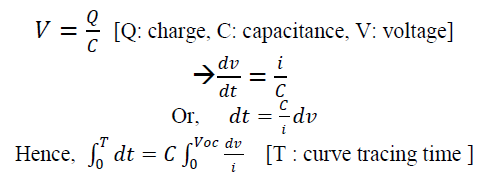 |
| Therefore, |
 (3) [Using equation 1 and
equation 2] (3) [Using equation 1 and
equation 2] |
 |
| This equation signifies that Supercapacitor voltage cannot reach the exact Voc point. It can be intuitively
verified from
figure 6 and figure 7, the charging characteristic of supercapacitor directly fed by a solar cell or module. Here
we can
see that both voltage change and current change with respect to time have been slowing down at the end .So it
will take
infinite time to reach their optimum. |
| But in practice it can reach more than 99% of the open circuit voltage which is fair enough for precision curve
tracing.
Say, Supercapacitor voltage reaches K% of the open circuit voltage. Hence, changing the limits in equation 3, we
get- |
 |
V. EXPERIMENTAL SETUP |
| The experimental arrangement consists of PV cell or module, Supercapacitor bank, DAS, computer, variable
intensity
light source, current sensing resistor (Rcs) and two switches (figure 2). The DAS connected to the computer is
configured and controlled by a Graphical User Interface (GUI). DAS collects current information in terms of
scaled
voltage across Rcs Switch S1 is opened and S2 is closed before beginning the experiment to discharge the
Supercapacitor Bank. Then S2 is opened and S1is closed at the starting of the experiment. DAS records the voltage
and
current values and sends to the computer where it is stored in an Excel file. A simple MATLAB program accesses
these
data from the Excel file to plot the desired V-I curve. |
| The V-I curve of a single solar module at different light intensities with different Supercapacitance values
have been
recorded with the experimental setup discussed before and compared with the resistive method. |
| V-I plots comparing Supercapacitor method against variable resistor method are shown in figure 9 at an
insolation
o 500W/m2. |
| A set of identical values of supercapacitors are employed to verify the closeness of the two methods of
characterization
at a higher intensity of 700 watt/m2also. |
| These figures indicate that V-I curve tracing can be done more smoothly and accurately by using Supercapacitor
than
the variable resistor. |
| The following Table 1 shows basic module parameters at an insolation of 500 watt/m2 and estimate of curve
tracing
time following equation 5. |
| Similarly, Table II has been drawn up at an insolation of 700 watt/m2 using a set of identical values of
supercapacitors |
| Here we have taken K=99 so that the curve tracing time reaches 99% of Voc. We can see here calculated value of
curve
tracing time closely matches with the experimental value. |
VII.CONCLUSION |
| Equation derived through the piecewise linear approximation of a PV characteristic curve can be used to predict
and
control the curve tracing time by selecting suitable value of supercapacitors. The combination of supercapacitor
and
DAS could be a better choice for characterization of high power PV generator than the combination of capacitor
and
DAS, as in the former DAS is more cost effective and less complex in terms of moderate scanning speed and
sensitivity
than the later. Such an online method is extremely user friendly and can be adopted by existing PV manufacturing
industries and testing laboratories for accurate online testing of PV cells and modules. |
Tables at a glance |
 |
 |
| Table 1 |
Table 2 |
|
| |
Figures at a glance |
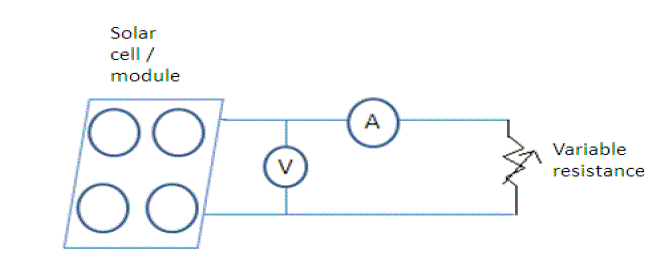 |
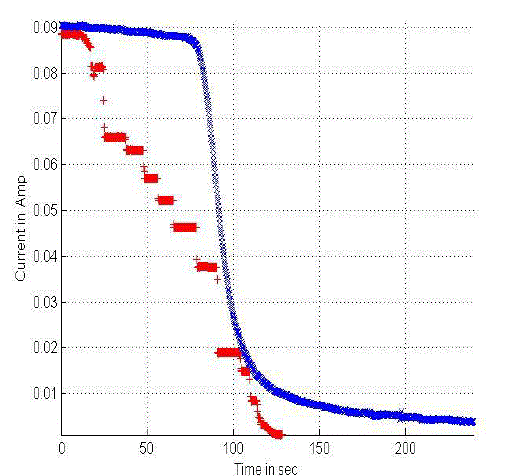 |
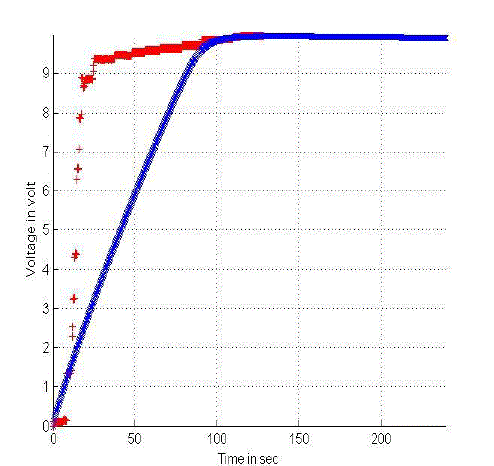 |
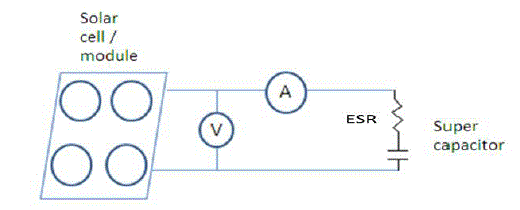 |
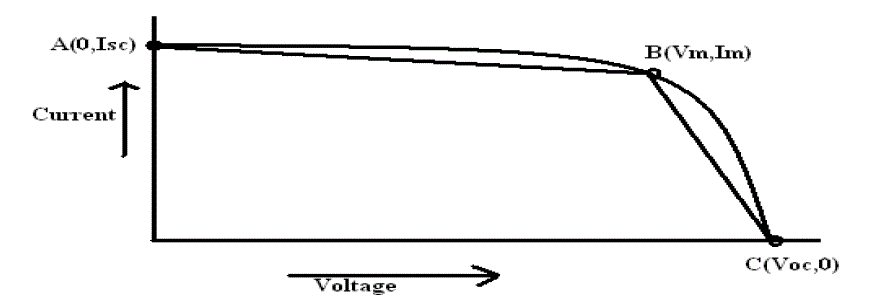 |
| Figure 1 |
Figure 2 |
Figure 3 |
Figure 4 |
Figure 5 |
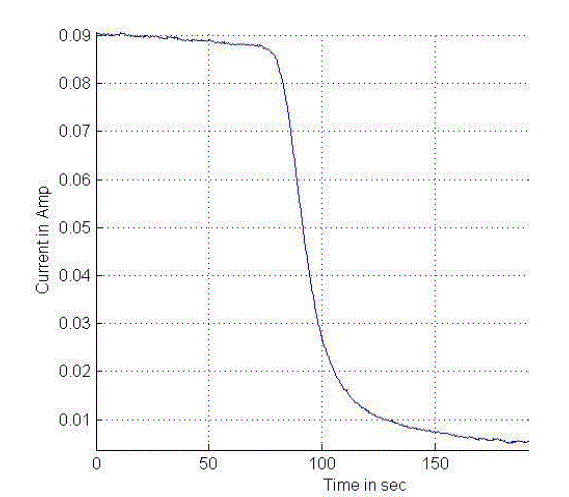 |
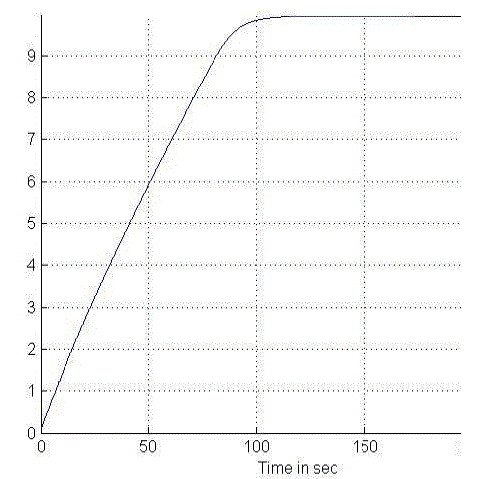 |
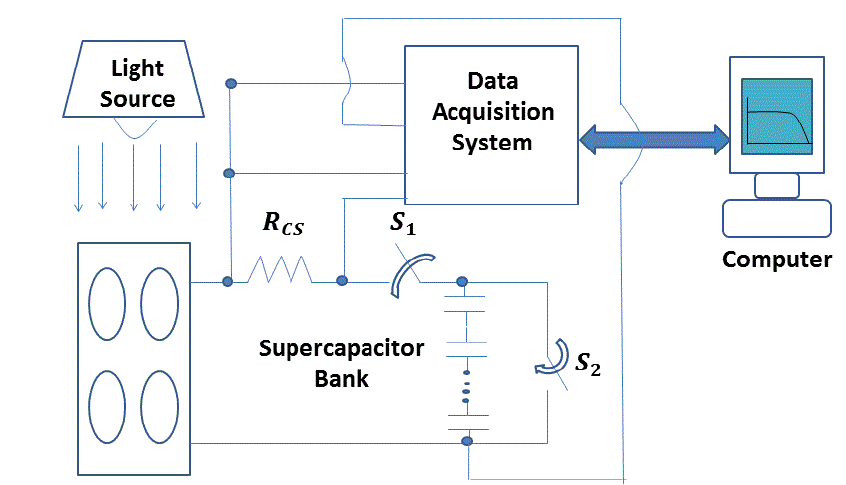 |
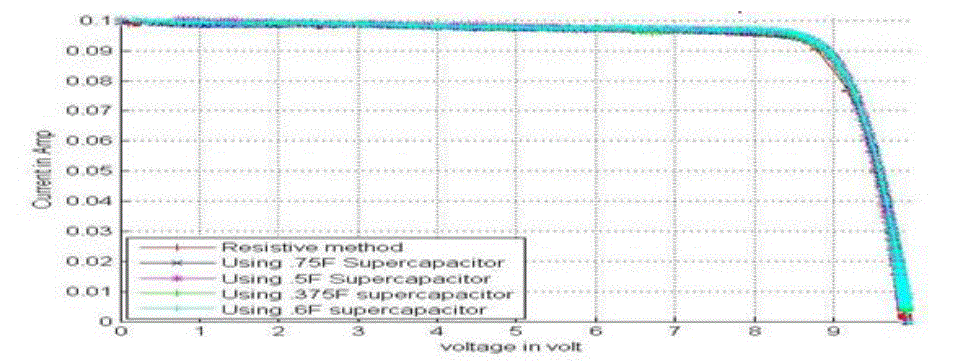 |
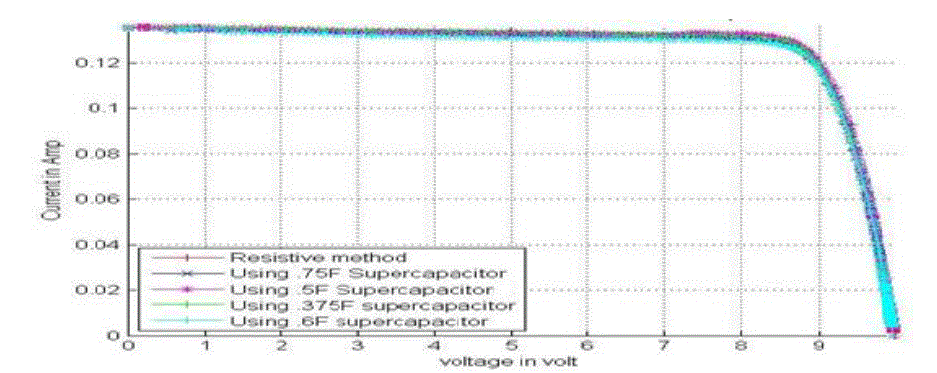 |
| Figure 5 |
Figure 6 |
Figure 7 |
Figure 9 |
Figure 10 |
|
| |
References |
- P. Hernday, “Field Applications for
I-V Curve Tracers”, SolarPro[Online], pp.77-106, Aug./Sep 2011.
Available:http://resources.solmetric.com/get/SolarPro-FieldApplicationsOf-I-V-Curve-Tracers-Hernday.pdf
- D. Mukherjee and S. Chakrabarti,
“Fundamentals of Renewable Energy Systems”, 1st ed. New Delhi, India: New Age
International (P) Ltd., June. 2004.
- G. Bhattacharya and H. Saha, “Simple
automatic current/voltage characteristics plotter for solar cells and arrays,” IEE Proc. G,
Electronic Circuits and Systems, vol. 133, no. 6,pp. 289-294, Dec. 1986.
- National Instruments Corp. “Part
II–Photovoltaic Cell I-V Characterization Theory and LabVIEW Analysis Code”,Texas. USA. [Online]. , May,
2012. Available: http://www.ni.com/white-paper/7230/en
- F. Granck and T. Zdanwich, “Advanced
System for characterisation and Calibration of Solar Cells,” Opto-Electronics Review, vol. 12, no. 1,
pp. 57-67, 2004.
- S.k.Ghosh, K.Ghosh,D.Ghosh, T.Sarkar,D.Mukherjee,
“A simple and Low Cost Automatic I-V Plotter for PV Modules,” Proceedings ofInternational Solar Energy
Conference,London,2012.
- M. M. Mahmoud, “Transient analysis
of a PV power generator charging a capacitor for measurement of the I-V characteristics,” Renewable
Energy, vol. 31, pp. 2198–2206, 2006
|